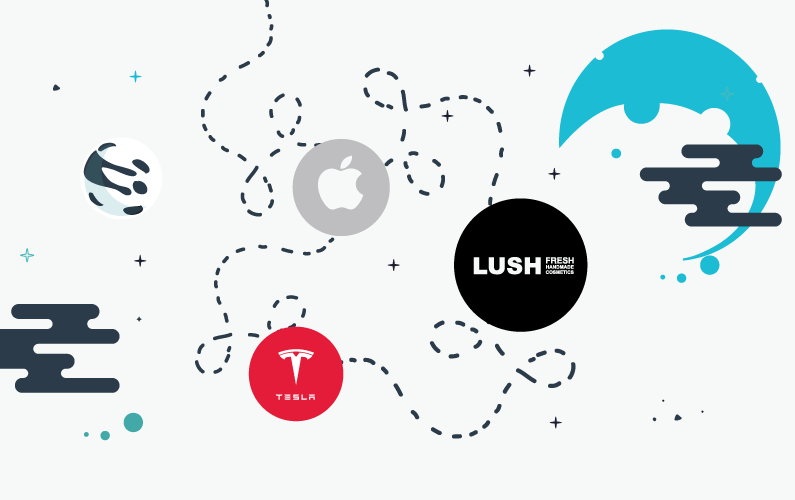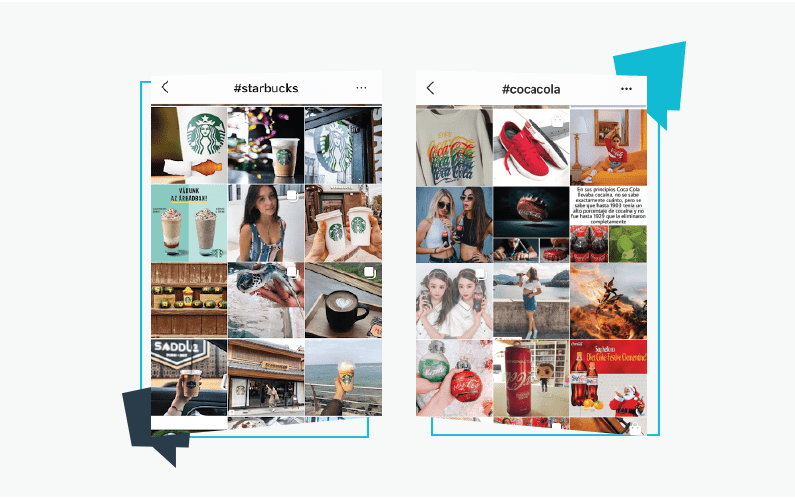Who are LUSH and Tesla trying to trick?
Some brands invest most of their profit and energy into creating content and advertisements on social media. And on the other hand, some brands invest 0$ in their advertisements in social media, yet they are one of the most successful companies in the world. How could it be? What is so different about their digital strategy? Some of them even made a loud announcement that they are quitting social media, while others were never officially there. For some, it’s even true that they don’t invest a single $ in marketing.
The key thing is that these brands put their consumers first. And especially when it comes to social media and focus on branded content. In this article, we will reveal what is the secret behind their “non-investing or non-existing” marketing strategy and what you can learn from it.
What is their social media strategy?
In the age of social media, when brands are furiously trying to create content, promote it, and check for reactions, the world’s most valuable company has never put out a Facebook post. When you think about a huge brand like Apple, you would probably assume they have a large social media presence. Since they created almost a cult out of their brand, you would surely guess they have a large team for creating content on social media, responding to customer reviews and attempting to stay relevant in the social media sphere.
But if you actually check their Facebook and Twitter accounts, you will see they have them – but they haven’t ever posted anything. How can a company this successful ignore social media – that some are calling the future of marketing? And what is their digital strategy then?
Most brands use social media to increase their exposure and brand awareness. Apple doesn’t need to do that – everyone has at least heard about Apple. Moreover, they create so much buzz with their launch events each year that people are standing in lines outside their stores waiting for days to buy their newest product. And then these stories are the ones that get shared about the brand. After all, Apple’s ghosting from social media is partly because it has a whole “army” of loyal users who create content for them, so-called user-generated content. That’s why Apple doesn’t need to prod anyone to buy their products – their audience is doing that already.
Their presence on social media is obviously through earned and not paid media. Paid advertising on social media would only put it back on the same playing field as its thousands of competitors. And more brands do the same. Whether you have a positive or negative opinion about it, everyone has heard about Tesla. Regardless of everything, Tesla is the only car company that does not spend money on advertising via social networks. According to research from BrandTotal that covered the social media campaigns of Toyota, BMW, Ford, Audi, Honda, and many others, including Tesla. From all of them, Tesla stands out for not investing in this type of advertising, which is not how their competition work. Specifically, Toyota spends 62 percent of its budget on Facebook advertising while Porsche spends 14 percent of that budget (but that’s why 47 percent go to YouTube).
And Tesla is achieving its marketing organically – two million organic engagements – mostly on Instagram (55 percent) but also on Twitter (11 percent). Only Musk has 28 million followers on Twitter. With a nonexistent budget for advertisements, Tesla secured a place in auto marketing history by sending the Tesla electric car to space, while the launch was clearly one of the most dramatic live streaming moments that generated the biggest possible publicity boost for Musk’s electric-car company.
Not less important, the social buzz from the whole event was positive, with many observers were simply excited to see America ambitiously returning to space. Again, a great move that brought organic engagement, PR talks, and word of mouth marketing. Moreover, Musk also uses his Twitter account actively, and he responds to questions and concerns from Tesla customers, teases upcoming features, and jokes around. And by doing this, he (and the company) are creating a community of followers that will spread the brand content themselves.
The third and most controversial example of a different social media strategy is with LUSH cosmetics. Their recent shocking announcement stated like this:
“We are tired of fighting with algorithms, and we do not want to pay to appear in your newsfeed. “
In an utterly digital society, where social media is seen as a key marketing tool for brands, this was a bold move from the successful cosmetics brand. LUSH insists that they remain the community – not only on social media. This bold act is something that also reflects the brand values because LUSH has a strong history of standing up for social, political, and environmental issues. We wrote about brand activism in a separate blog post. But who can a brand like this let this happen? Because their key values like discarding plastic packaging, using organic ingredients and fight against animal testing of cosmetics helped the company build a loyal fan base. From a marketing point of view, LUSH will much more depend on influencer marketing and user-generated content – making their audience and community speak for them. What is common between these three brands is that their values and their consumers are prioritized. They use their customers to create branded content, and they serve as a marketing channel themselves. They have their audience generating content for them, and that is the real benefit of UGC.

It is time for changing the digital strategy
Establishing a brand that has a clear set of values is the rule for any serious company today. Besides that, using branded content and user-generated content is the way brands will base their marketing strategy. What is so magical about user-generated content? UGC spreads authenticity, builds trust, and connects with the audience on more levels than any expensive ad campaign. More brands are switching up to this form of marketing, as they result in high success, especially among millennials. Millennials, the mysterious group that intrigue every marketer, are known for having a good camera smartphone with constant internet connectivity. For them, it’s easy to generate content about products and share them on social media. Millennials are born between 1980 and 2000, meaning they are between 15 and 35 years old. They are the ones who know very clearly what to say, always using their phones and social media to express their thoughts. They are the ones who spend the most, so they are an economic generator and as such are endlessly interesting.
Millennials are the first true global generation. And for all the major global brands and agencies – they are the biggest challenge the marketing industry has ever faced. The good thing here is that they believe in UGC the most, it is their most important source of information, and they remember it – but they also love to share it themselves. All of this information suggest that it is time to change your digital strategy. From constant creator and curator of content, by pushing your products via paid ads, you need to become the motivator for content creation on social media, coming directly from your audience.
How to inspire people to create UGC?
User-generated content is a powerful marketing tool for brands, especially ones that want to target millennials. UGC achieves brand affinity, engagement, and contributes to developing a positive brand image. If you think about it – the audience will surely respond more positively to a photo shared by a person you know than a photo created by the brand. UGC boosts digital strategy because it is about creativity, authenticity, and deeply personal experiences – and this is exactly what the booming millennials want.
But how to inspire your audience to create UGC? Based on our research and experience, we can suggest four situations where UGC is stimulated the most:
- People on social media are already making huge amounts of UGC for big brands like Starbucks, Coca-Cola, NIKE using their hashtags. Your first step is to audit existing photos on Instagram – start with your brand’s name, a campaign hashtag, or perhaps a popular product. This is the easiest way of finding and sharing user-generated content on your social media.

Examples of UGC on Instagram
- User-generated content is all about your customers and how they relate to your brand. So, similar to the previous idea, an articulate and clear call to action is required. While your customers may use hashtags with your brand name, it would be best to create and promote a hashtag that is personal, actionable, and with a clear CTA.
- If you happen to be a new brand in the market or if you are just starting with your digital strategy on social media is not the best idea to include UGC in the promotion. The suggestion here is to spend some time and energy on your own content and/or through influencer activities. This way, your audience will get to know you, and you can prepare them for UGC strategy.
- Last but not least, you can always plan some kind of a contest (which may or may not be with a prize) for the most active person on social media or competition between your audience about who can create the best content.
This is the beauty of using UGC – you can launch a targeted contest that aligns with your content strategy and lifts your organic engagement high in the sky. UGC can be a creative and cost-effective way to improve a variety of digital channels. If you want to know more about UGC and how to incorporate it in your digital strategy, feel free to contact us.



